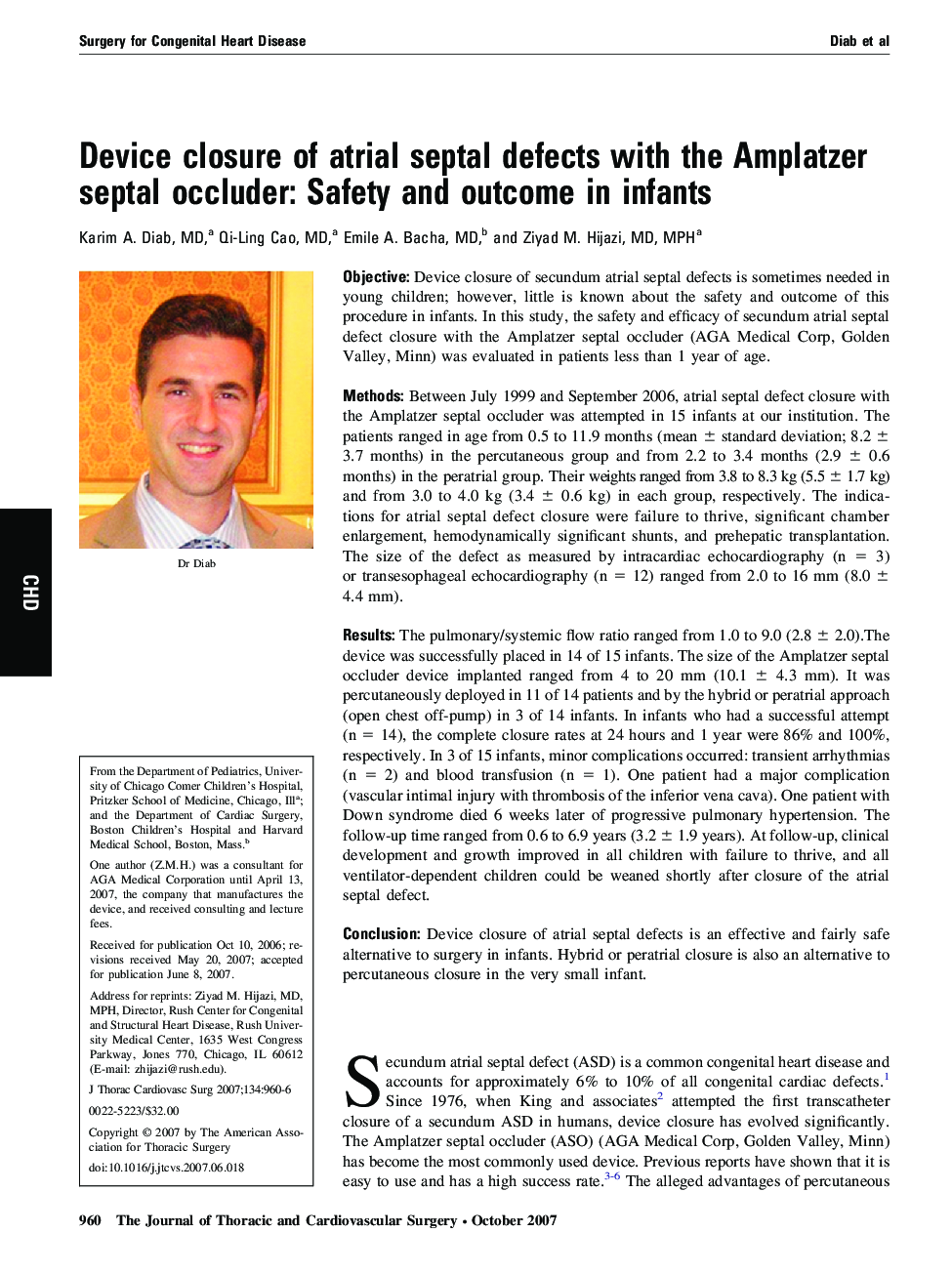| کد مقاله | کد نشریه | سال انتشار | مقاله انگلیسی | نسخه تمام متن |
|---|---|---|---|---|
| 2983185 | 1578693 | 2007 | 7 صفحه PDF | دانلود رایگان |

ObjectiveDevice closure of secundum atrial septal defects is sometimes needed in young children; however, little is known about the safety and outcome of this procedure in infants. In this study, the safety and efficacy of secundum atrial septal defect closure with the Amplatzer septal occluder (AGA Medical Corp, Golden Valley, Minn) was evaluated in patients less than 1 year of age.MethodsBetween July 1999 and September 2006, atrial septal defect closure with the Amplatzer septal occluder was attempted in 15 infants at our institution. The patients ranged in age from 0.5 to 11.9 months (mean ± standard deviation; 8.2 ± 3.7 months) in the percutaneous group and from 2.2 to 3.4 months (2.9 ± 0.6 months) in the peratrial group. Their weights ranged from 3.8 to 8.3 kg (5.5 ± 1.7 kg) and from 3.0 to 4.0 kg (3.4 ± 0.6 kg) in each group, respectively. The indications for atrial septal defect closure were failure to thrive, significant chamber enlargement, hemodynamically significant shunts, and prehepatic transplantation. The size of the defect as measured by intracardiac echocardiography (n = 3) or transesophageal echocardiography (n = 12) ranged from 2.0 to 16 mm (8.0 ± 4.4 mm).ResultsThe pulmonary/systemic flow ratio ranged from 1.0 to 9.0 (2.8 ± 2.0).The device was successfully placed in 14 of 15 infants. The size of the Amplatzer septal occluder device implanted ranged from 4 to 20 mm (10.1 ± 4.3 mm). It was percutaneously deployed in 11 of 14 patients and by the hybrid or peratrial approach (open chest off-pump) in 3 of 14 infants. In infants who had a successful attempt (n = 14), the complete closure rates at 24 hours and 1 year were 86% and 100%, respectively. In 3 of 15 infants, minor complications occurred: transient arrhythmias (n = 2) and blood transfusion (n = 1). One patient had a major complication (vascular intimal injury with thrombosis of the inferior vena cava). One patient with Down syndrome died 6 weeks later of progressive pulmonary hypertension. The follow-up time ranged from 0.6 to 6.9 years (3.2 ± 1.9 years). At follow-up, clinical development and growth improved in all children with failure to thrive, and all ventilator-dependent children could be weaned shortly after closure of the atrial septal defect.ConclusionDevice closure of atrial septal defects is an effective and fairly safe alternative to surgery in infants. Hybrid or peratrial closure is also an alternative to percutaneous closure in the very small infant.
Journal: The Journal of Thoracic and Cardiovascular Surgery - Volume 134, Issue 4, October 2007, Pages 960–966